Renault Master E-Tech electric van review: Parkers Van of the Year 2025
Everything is new about the Renault Master E-Tech, and it sets some impressive new standards
PROS
- Vastly improved and modernised large van
- Excellent range/payload combination
- Rides and drives well
- Great turning circle
- Some good internal storage features
CONS
- Only a few panel van combinations to start with
- Some old-fashioned cabin oddities
- No decision on hydrogen yet
- Not many eco-enhancing modes
- Low on power and slow compared with rivals
Summary
The 2025 Renault Master is something to celebrate, as it is something of a rare breed – it is an all-new large van that bears no relation to its immediate predecessor of the same name. That previous version was never one of the best electric vans, due to its aged nature, but this model is a completely different proposition. In fact, it's so good, we've made the new Master a multiple winner in the 2025 Parkers Van and Pickup Awards.
This impressive new van won Best Large Van, Best Electric Van and Best Van overall. Unlike many new or revised vans, the Master has been redeveloped totally afresh from the ground up with new looks, a completely updated cabin and a set of new power options and potentially more on the way.
The new electric van version is right at the centre of the line up and this one is promising some figures that will appeal both in terms of the electric range, but also to those that are put off by the cost of going for an EV. The pricing is very competitive and lower than some mid-size electric van rivals.
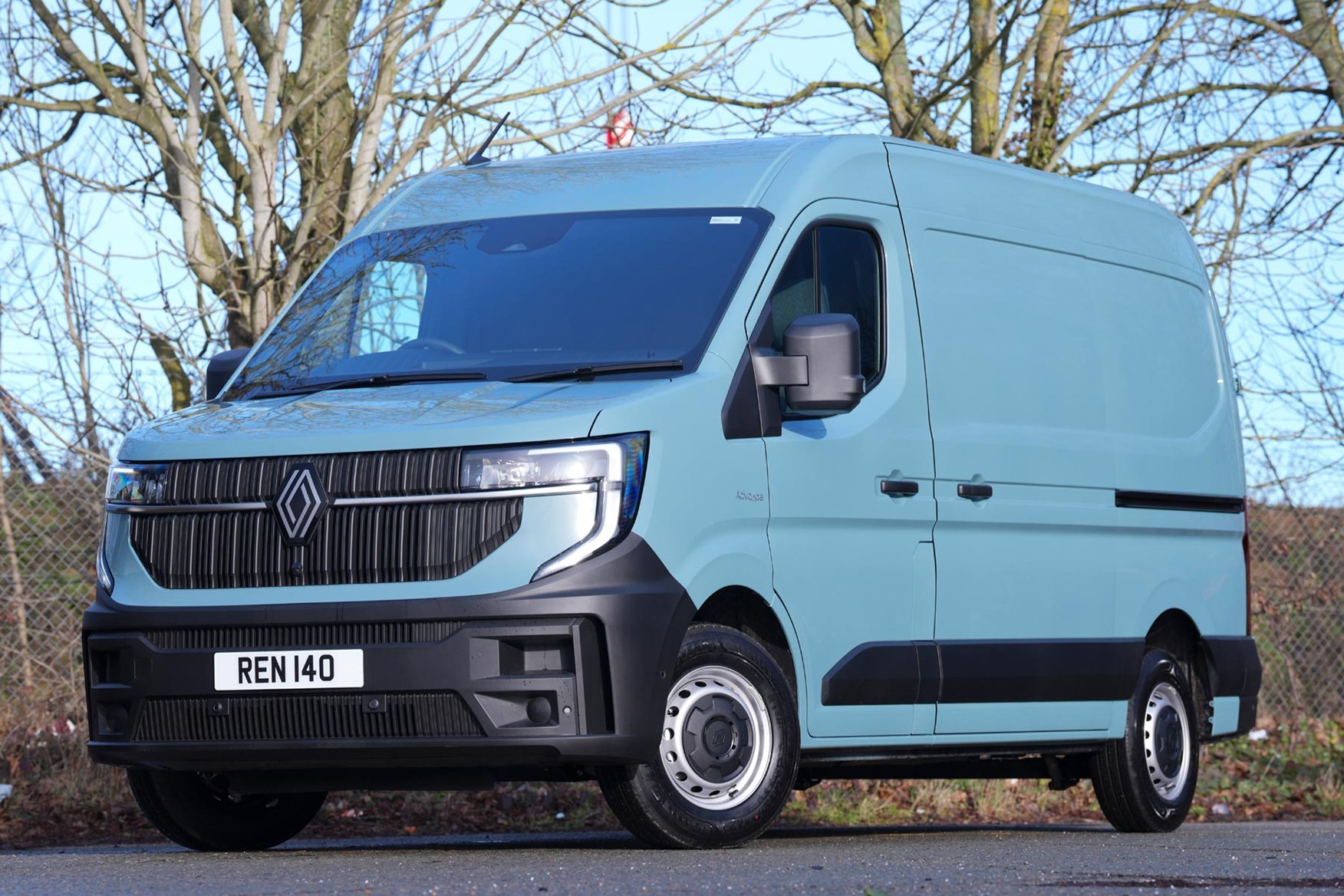
That electric range is right up with the best in class, even factoring in the surge in large-van capabilities, courtesy of various manufacturers choosing to fit huge batteries. Renault hasn’t gone down that route, though, with a solitary 87kWh battery being offered in the UK. There is a smaller, 40kWh option that will be offered in other European markets and in the Master’s sister van, the Nissan Interstar, but Renault reckons that all the UK demand will be for the bigger battery so it is putting all its efforts into that.
What are the Renault Master E-Tech’s rivals?
Pretty much every large van has an electric version these days, and the closest is the Nissan Interstar equivalent that is fundamentally the same van as the Master. It might look cheaper on paper but that is down to that smaller battery that Renault isn't bothering with.
The previous class leader was the Ford E-Transit, which set the previous standards in terms of sales and ability. The Mercedes-Benz eSprinter is one that has boosted its range in recent times, by installing a massive battery. The Stellantis brands have done similar, with the Citroen e-Relay, Fiat E-Ducato, Peugeot e-Boxer and Vauxhall Movano Electric all much the same van with different badges on the front.
Then there is the Iveco eDaily and the Maxus eDeliver 9. The notable exceptions are the MAN TGE and the Volkswagen Crafter, which won’t have an electric option in the UK until the next generation.
What versions of the Renault Master E-Tech are there?
There are not quite as many versions of Master E-Tech as there are diesel Masters, although that is because Renault has concentrated on what it sees as being the bigger seller. There are only three body sizes to start off with, as there are only two lengths and two heights.
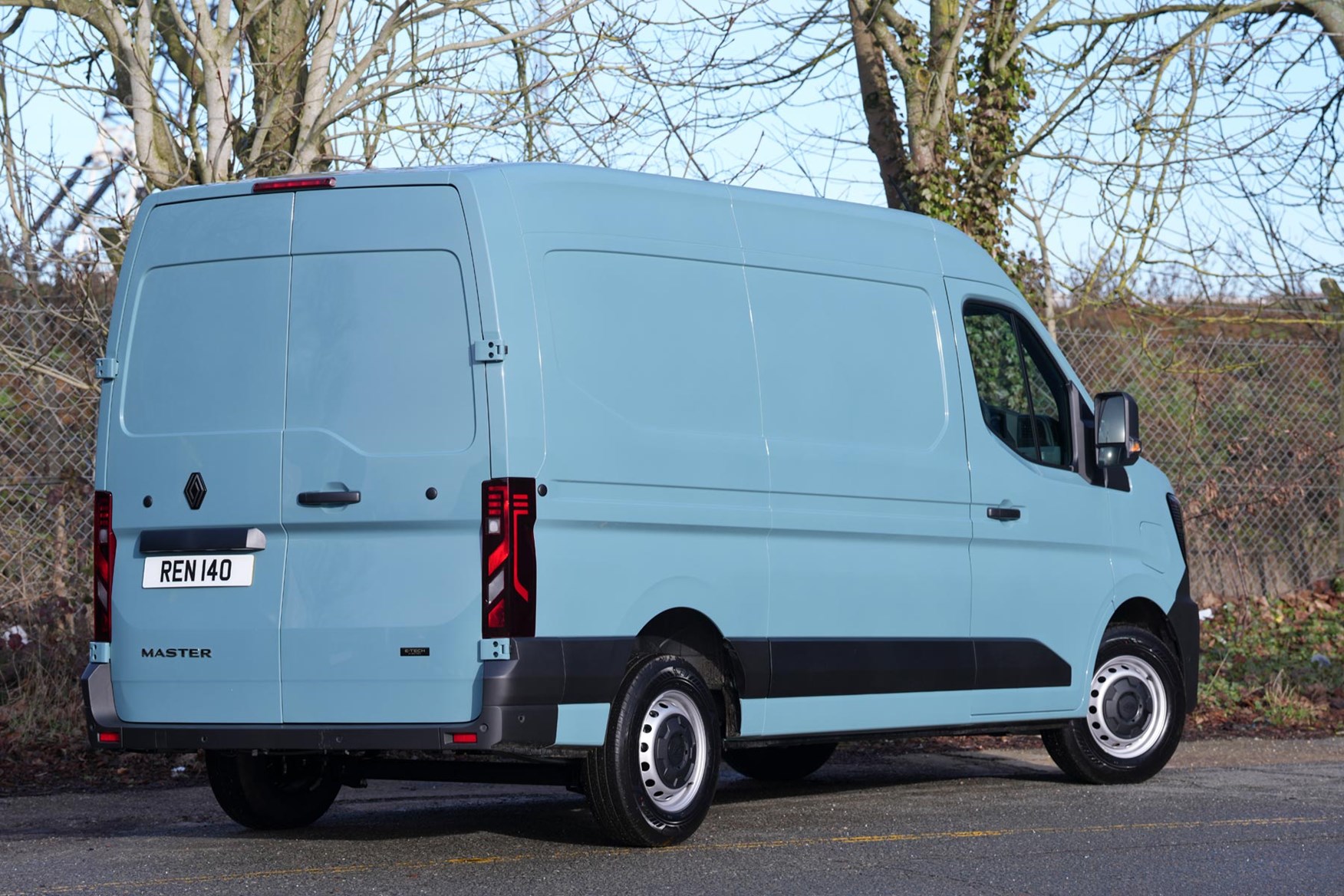
There is only the one trim, too. In what is a bid to keep prices in check, it is only the lower Advance specification on offer for the electric version. While the diesel also gets an Extra trim, this isn’t available on the E-Tech, at least not at launch.
Verdict: is the Renault Master E-Tech any good?
There isn’t really anything glamorous or showy about the Renault Master E-Tech, but it does a fantastic job of offering a big electric van with an impressive EV range that is good to drive. Thanks to a battery that is not too big and heavy, it is possible to get a decent payload, too.
The cabin is a smart and driver-focused place, with some decent and clever storage spots while the loading bay is a good size and shape, if not one that offers anything particularly ground breaking.
What is key, above all of this, though is that the Master starts at a really attractive financial point. The starting price is less than £40,000, which is lower than some medium vans. This is a big step as the commercial vehicle industry looks to entice buyers to go electric.
Skip to our full verdict on...
- Smooth and easy to drive
- Not very quick
- Only one battery and motor combination
The Renault Master E-Tech battery and motor offering is very simple in the UK. There is just the one combination, so there is no decision to make between range and payload.
The battery is an 87kWh unit and it is paired with a 140hp motor. This is not the most powerful motor option offered in an electric van – far from it – and it is not even the punchiest powertrain when compared to the diesel options. It has less torque than the diesels, too, which is also a little unusual given that is something that electric vehicles have plenty of.
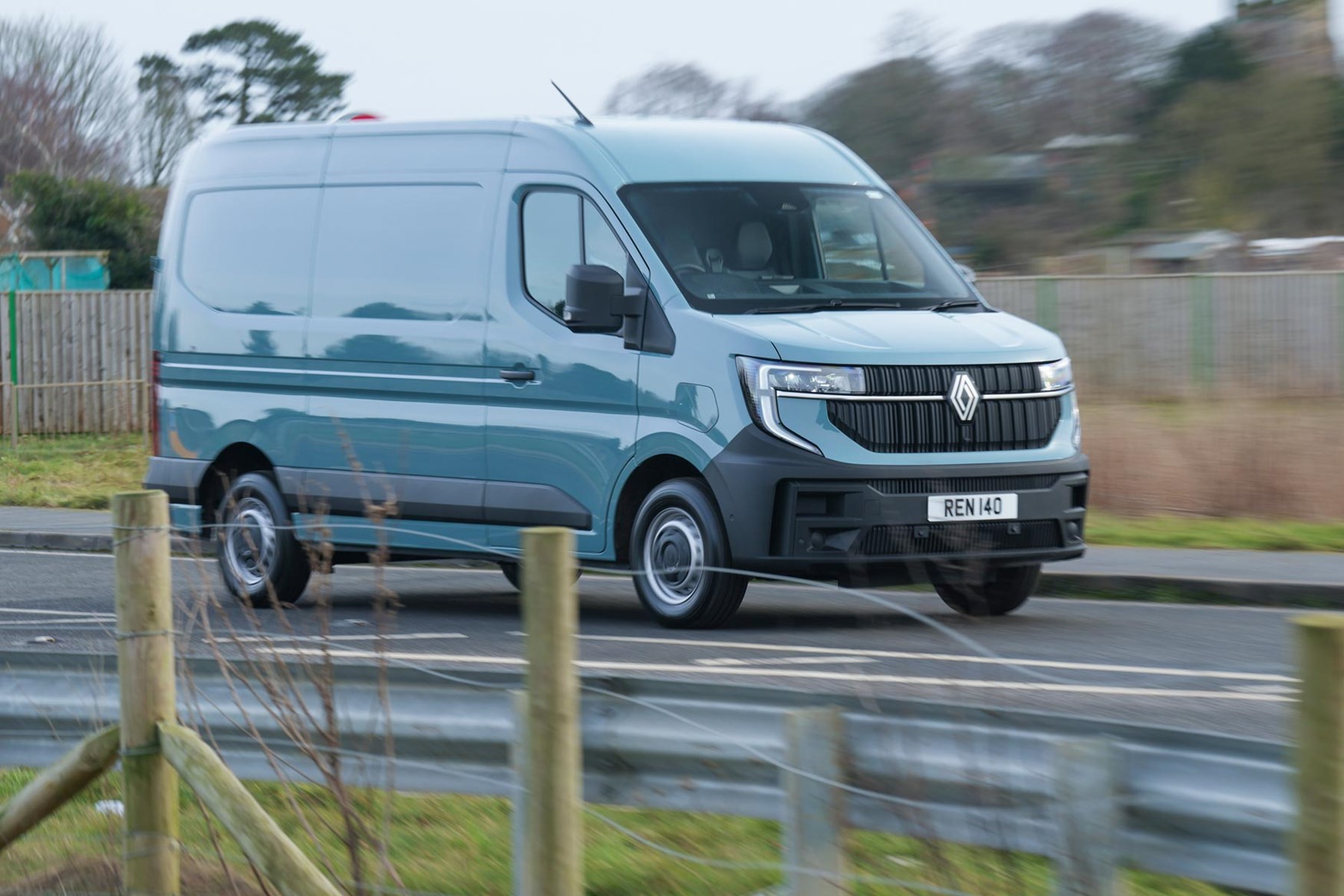
All this leads us to start with the Master E-Tech’s slight weak spot as far as its drive is concerned – it isn’t that quick and never feels that powerful. That said, I initially drove it with a 400kg payload in the back, and it certainly didn’t feel like it struggled, either from a standstill or up the occasional hill I encountered. It’s more that electric vans often offer something a little extra in terms of power and pace and the Master is more sedate and sensible. This was the case when I drove it with an empty loading bay too - it's just not as rapid as the electric powertrain could be.
Old-school controls
With most modern electric vans you simply jump in, press a button, pop it into D and head off, with the key tucked in your pocket all the while. There are a couple of things that prevent you from doing that in the Renault Master E-Tech, though.
Firstly, it comes with a physical key that you have to put into an ignition slot and turn, which is relatively rare even in a modern petrol or diesel vehicle where keyless start is often the norm. The second strange feature is the physical parking brake lever, which is another thing that is almost extinct in vehicles of all kinds. Mercifully it is tucked in between the driver’s seat and the middle one, so it doesn’t take up any room in the cabin.
The other good news is that this is being phased out - all electric Masters will get an electronic parking brake by the end of 2025.
Easy to drive and see out of
That is where the oddities on the Master E-Tech end. The steering is solid at higher speeds, which makes it easy to hold your line on the motorway, but it is also light enough at lower speeds to take advantage of what is an impressively tight turning circle.
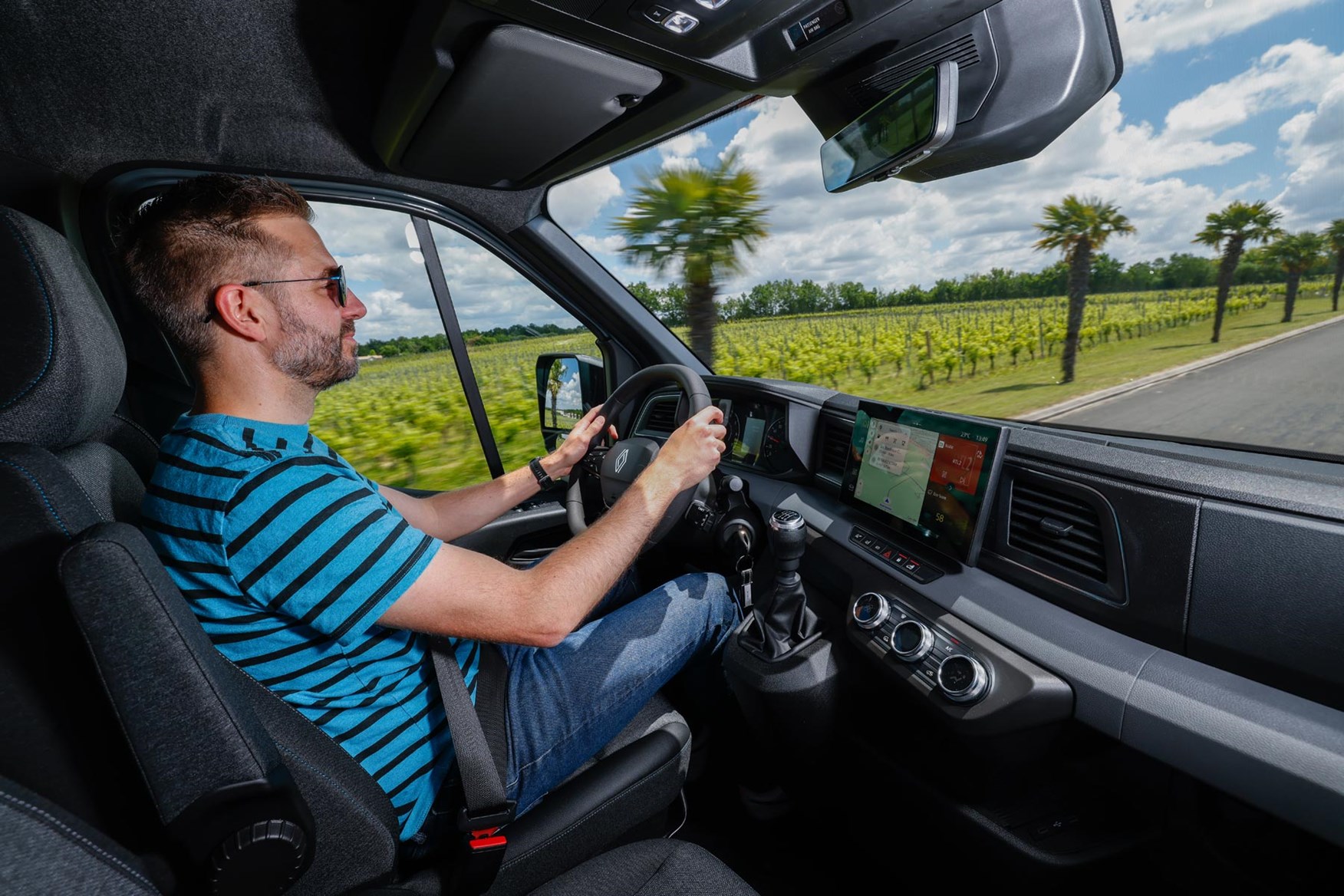
There is a handy and notable piece of modern tech in the cabin, in the form of a digital rear-view mirror. The image is clear and it is a useful way of being able to see behind the van. As ever with these miniature screens, though, it isn’t quite the same as a physical mirror as it takes a moment or two longer to focus on the subject on display. It’s better than not being able to see behind you, though.
Otherwise, visibility is good, with big windows and the usual high-up large-van vantage point. The squared-off front end makes it easy to place when parking head on, too.
- Some great storage
- Some less brilliant
- Room for three in wide cabin
I had such high hopes for the 2025 Master. Renault said that this would be the first time that one of the brand’s right-hand-drive vehicles had all the same practicality features as the left-hand drive model. Sadly this is not the case, and the huge and practical sliding glovebox is not carried over into the UK market. Instead, the space is given over to the fuse box and over here we have to put up with a tiny and not very handy conventional compartment, which is good only for an actual pair of gloves and not much more.
One feature you might find yourself reaching on getting into the Master is a grab handle – often located on the A-pillar at the front of the cabin – but there is none. Rest assured, though, the conveniently placed cupholder has been tested and it will be able to drag 300kg of weight even when the van is moving, so it will stand up to you taking hold to haul yourself up from the kerb.
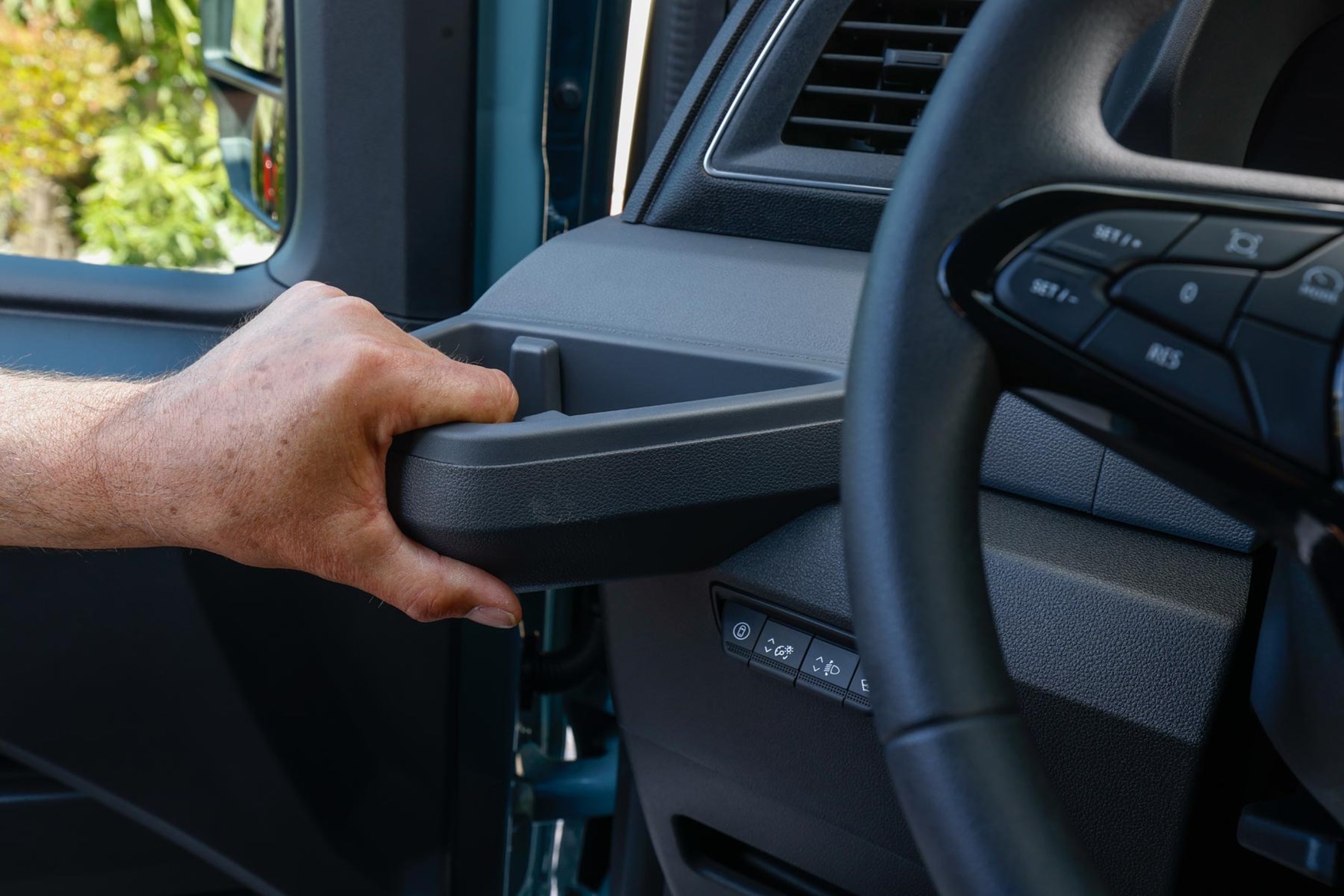
The driving position is otherwise fairly standard, with a good amount of adjustment for the wheel and a reasonable amount for the seat, curtailed only by the bulkhead behind it. It dealt well with a five-foot 11 driver with longer legs, though.
The three seats across the middle all offer a good amount of room for an adult occupant, and getting around in the cabin is relatively easy. It’s not quite as simple as the Ford Transit Custom – the floor isn’t totally flat and there is a bit of the dash that intrudes into the middle passenger’s space, so you shuffle rather than slide from one side to the other.
Storage good on the whole
Thanks to that disappointing glove box it is a bit of a mixed bag when it comes to storage. There are multiple boxes on the top of the dashboard, complete with lids to tuck things out of sight which is all very useful.
A small overhead storage section is also included, as is a huge under-seat cubbyhole. This is the best place to store the charging cable so it doesn’t fly around in the back, but it is more than big enough to take something fairly substantial should it be a while until you need to plug in.
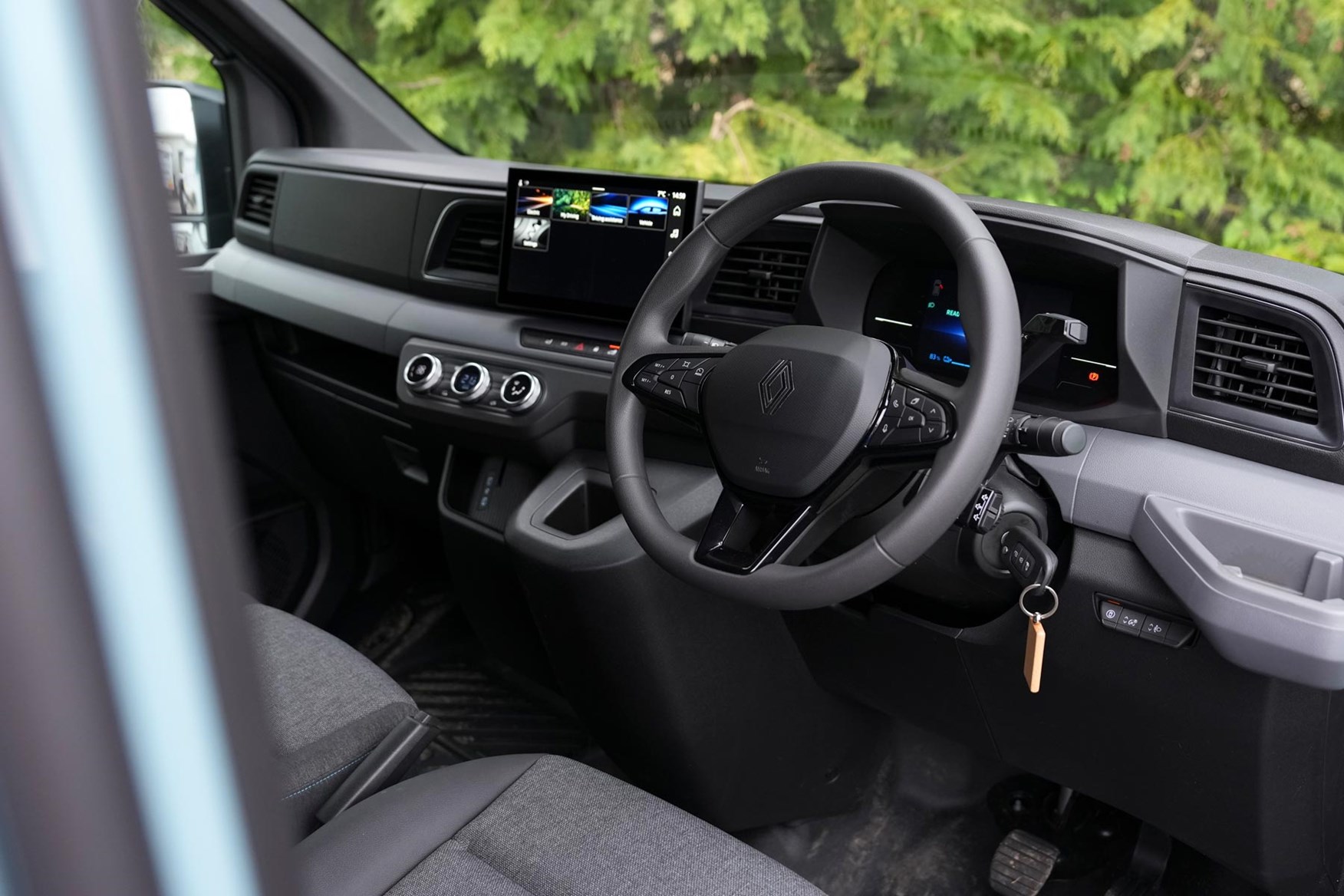
The only other cables you will be able to plug into the Master are the more modern USB-C ones – there are no older-style USB-A slots any more. There is, however, an area for a wireless charging slot for your phone. It holds a large smartphone easily and is grippy enough to stop it flying around the cabin, but it is a shame it is quite so visible – it would be better for it to be tucked away to remove it from the driver’s line of sight.
The screen up on the Master's dash is simple to use but there are, mercifully, some physical controls for the air conditioning and the volume - the latter are tucked away up on the top edge. The heated seat buttons are tucked away at the back of the seat cushions, so not immediately obvious but perfectly accessible once you have located them.
The door pockets are another slight disappointment, as they aren’t that big.
Smart information display
One area where the E-Tech has the edge over its diesel equivalent is the information display in front of the steering wheel. This is digital and editable for the electric model, and is much easier to read. The diesel's display is harder to read at a glance.
- Fantastic eye-catching starting price
- Only one trim on the E-Tech
- Impressive electric range
The Master can be forgiven many of its curiosities if it can live up to the promises of its numbers.
Key among these is the price, which starts at £42,500. This is not including VAT, but is also not factoring in the £5,000 government plug-in van grant, which means you can take the price below £40,000. This is less than the smaller Ford E-Transit Custom, which launched about the same time as the Master.
Renault Master E-Tech range
The Master’s official electric range is up to 285 miles, although in reality most of the versions will be slightly less than that – the MM (Renault's name for the L2H2) I drove officially offers a maximum of 261 miles, although that wasn’t in final UK spec.
Fast charging comes as standard, which means that you should be able to replenish this fairly swiftly, but only if you take advantage of the public charging network. Hook up to a 22kW public AC point and you’ll get from 0-100% in 4h 35mins. However, be prepared for a bit of a wait on a domestic point – a full recharge is said to take 28hrs 30mins on a home 7.4kW wall box.
If you can find a charger capable of it, then it can take speeds of up to 130kW, which could see you get a full charge in only 1hr 10mins.
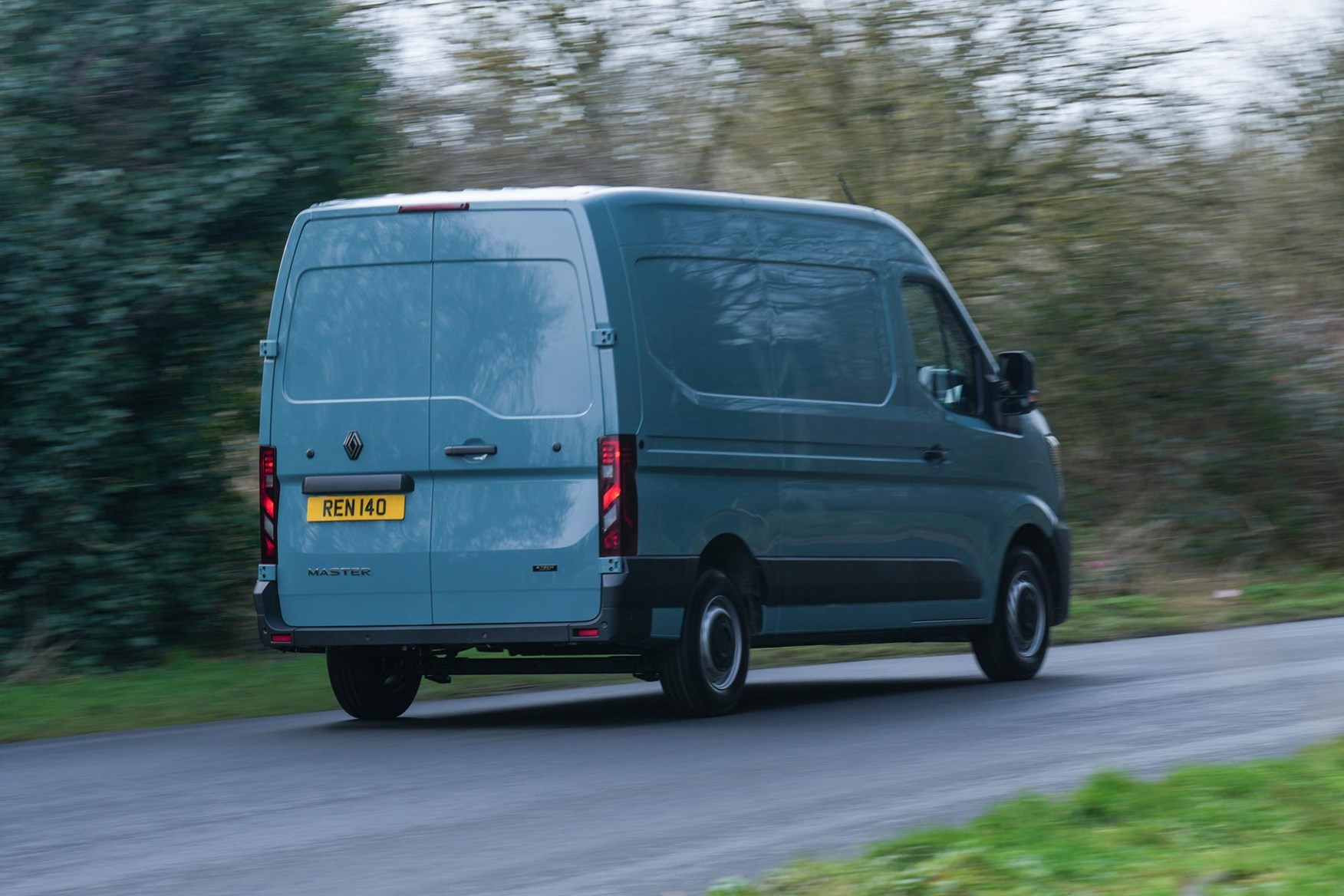
Renault Master E-Tech servicing
The Renault Master E-Tech service intervals are every two years or 24,000 miles, whichever comes first.
Renault Master E-Tech warranty
The Master E-Tech gets Renault’s standard three-year 100,000-mile warranty. You also get three years' roadside assistance.
Renault Master E-Tech standard equipment
Many electric vans take a different approach to specification, with manufacturers typically loading on loads of equipment to justify the extra cost in part. However, Renault is only offering the Master E-Tech in the one trim, and that is the Advance. Somewhat confusingly, that is the lower of the two that are offered in the model’s wider range – the higher Extra isn’t available.
Renault Master E-Tech Advance equipment highlights:
- Manual air conditioning
- 10.0-inch multimedia system with Apple Carplay and Android Auto
- Automatic lights and wipers
- Rear parking sensors
The brand-new nature of the Renault Master E-Tech means there is no historical data to go on for this precise model, but Renault has more history in electric vans than many other brands. The batteries and motors have developed notably in that time, too, so you can’t really draw direct comparisons between the earlier models and this latest version.
- Renault aiming for a high score
- Lots of safety kit included
Renault is targeting a top Platinum safety score from Euro NCAP, and its 20 safety systems should help it achieve its aim.
Those safety systems include the following:
- Lane departure warning
- Active emergency braking system
- Intelligent speed assist with traffic sign recognition and overspeed prevention
- Driver drowsiness and attention warning
- Driver, passenger and side airbags
- Emergency call system
The security systems are simple, but include a perimetric and volumetric alarm as standard.
Which Renault Master E-Tech is best for me?
Simple this one – there is only one motor, only one battery and just the one trim. There are a few different shapes and sizes, though, and your needs will dictate that more than anything. You can get a 3.5-tonne or 4.0-tonne version, but we’d stick with the 3.5-tonne so as to maximise the number of potential drivers who can get behind the wheel with a standard car driving licence.
















